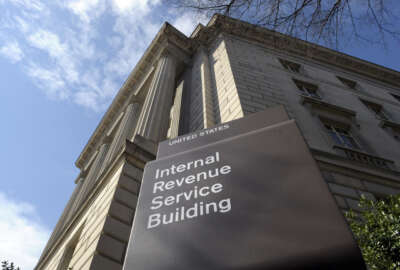IRS relaunches Get Transcript, adds 2-factor authentication a year after breach
The Internal Revenue Service relaunched Get Transcript, the application that lets users access their tax returns electronically, on Tuesday. It's been about a year...
A year after the Internal Revenue Service disabled Get Transcript, the online service that gave the public electronic access to their tax returns from previous years, the IRS officially relaunched the web application Tuesday.
And this time, users must now go through a two-step authentication process to access the Get Transcript feature online.
The relaunch comes roughly a year after the agency first disclosed a major breach to IRS systems. A criminal network stole personal data from roughly 610,000 taxpayers and used that information to get inside IRS networks. Hackers successfully accessed old tax returns for about 334,000 people, the agency said last May.
The IRS, with help from the U.S. Digital Service, created a new multi-factor authentication framework that meets standards from the Office of Management and Budget and the National Institute of Standards and Technology.
“Criminals are becoming increasingly sophisticated and continue to gather vast amounts of personal information as the result of data breaches at sources outside the IRS,” Commissioner John Koskinen said in a June 7 statement. “In the face of that threat, we must provide the strongest possible authentication processes, while trying to enhance the ability of taxpayers to legitimately access their data and user IRS services online. We recognize that enhanced security will increase the challenge for taxpayers accessing our online services.”
Similar to the process many financial and insurance companies have already deployed, first-time Get Transcript users will be asked to submit their names and email addresses to receive a one-time confirmation code. Users will then enter the code and provide their Social Security number, date of birth, filing status, address and some financial information, as well as their mobile number. The IRS will text taxpayers a six-digit activation code, which users will then enter to create a username and password.
Previous Get Transcript users will have to re-register and go through a similar authentication process to strengthen their online identities.
Returning users must receive a new security code via text each time they revisit the web application, according to the agency’s fact sheet on the new Get Transcript authentication process.
The IRS also launched a video that explains how the new and returning users can register with Get Transcript:
Another new feature lets users see the last time their Get Transcript page was accessed online, the IRS said.
After a series of performance tests, the agency soft-launched the web application a few weeks ago, said Michele Causey, IRS director of user experience.
“We did a lot of testing, looking at analytics, doing process flows, user flows to make sure that one, it was secure, and two, that it met the needs of the taxpayer community,” she said during a June 7 Government Executive’s customer experience summit in Washington. “That’s a prime example of the deliberate approach that we take to make sure that we bring services to bear.”
As Koskinen alluded, these processes will be significantly more time consuming and possibly more difficult for Get Transcript users than the past log-in process. But the IRS reminded taxpayers they have multiple ways to request a copy of their tax transcripts if they cannot access the web application — by phone or mail.
The breach of personal information on the IRS Get Transcript app last year was a significant setback to the agency’s ultimate vision to simplify and bring more of its services online as part of the IRS Future State initiative.
According to its research, most taxpayers would prefer to handle most of their questions and tax needs online, Causey said. With that in mind, the IRS is planning a major overhaul to its website and mobile apps.
“We want to educate the taxpayer,” she said. “The more information that the taxpayer has, the more empowered the taxpayer can be. We’re looking to do proactive notifications, as well as inform taxpayers of trends or potential issues with their accounts so they can self-correct without having to engage directly with the IRS.”
Causey said the ultimate goal is to incorporate Get Transcript into a future IRS MyAccount feature, which would serve as a place where taxpayers could check the status of their refund or communicate directly with an IRS customer service representative online.
The agency will also consider adding live text chat capabilities, a feature that would let taxpayers speak directly with an IRS customer service representative without having to pick up the phone. Causey said customer service reps can typically handle about five text chats simultaneously, rather than one phone call at a time.
But it’s also a move that should help the IRS save money. The agency lost about $1 billion in funding between 2010 and 2015. And the average cost of one customer service phone call has jumped dramatically within the past years or so. A call typically costs the IRS $55 on average now, compared with $35 in 2013. The average online conversation with a customer service rep costs about $1, Causey said.
“We’re not trying to eliminate other channels within the Service,” she said. “We want to have those channels available for those taxpayers who need them. But it makes sense to shift to an online environment.”
Copyright © 2025 Federal News Network. All rights reserved. This website is not intended for users located within the European Economic Area.
Nicole Ogrysko is a reporter for Federal News Network focusing on the federal workforce and federal pay and benefits.
Follow @nogryskoWFED





